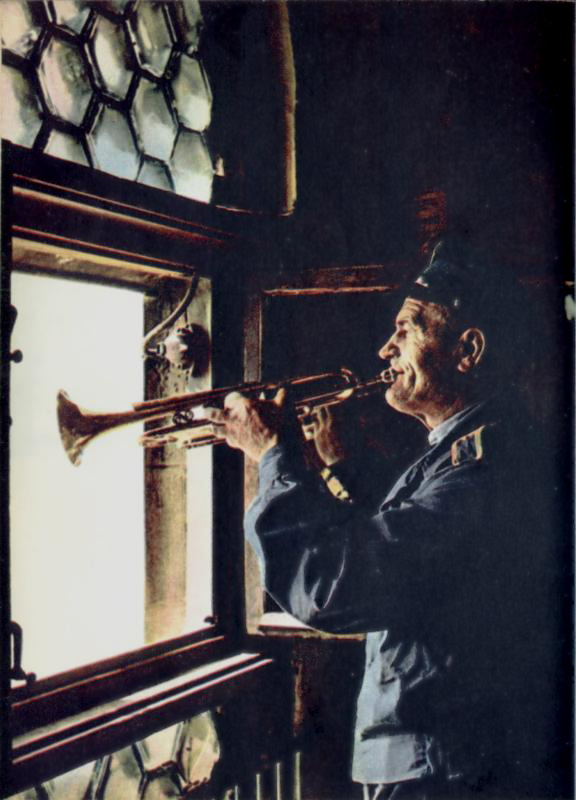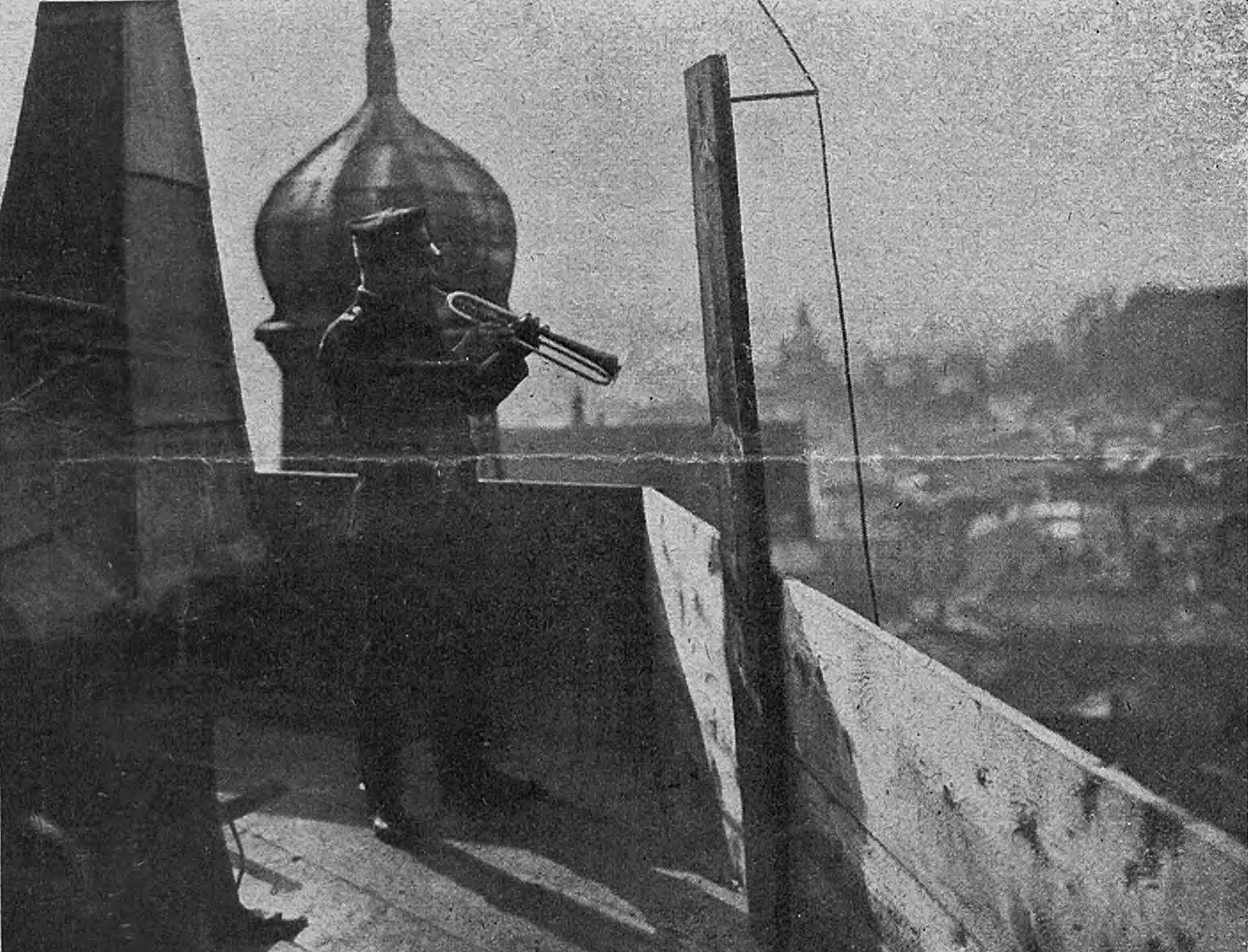


The St. Mary's Trumpet Call is one of the most recognizable and iconic melodies in Krakow, and indeed, throughout Poland. This sound, which has accompanied the lives of Krakow's residents for centuries, has become one of the city's most significant symbols. Every day, on the hour, it can be heard emanating from the northern tower of the Church of the Assumption of the Blessed Virgin Mary in Krakow's Main Square. This unique melody has a rich history, a source of pride for the people of Krakow and an inspiration for many artists and musicians.

Hejnał player in Kraków; Polish Wikipedia (upload by Topory)
The privilege and honor of playing the St. Mary's Trumpet Call belong to specially trained firefighters of the State Fire Service, who, due to their task, are referred to as trumpeters. However, one would be mistaken to think that the ability to play the trumpet and being a firefighter are sufficient to perform the St. Mary's Trumpet Call. To become a trumpeter, one must meet very challenging and complex requirements. There have been instances, such as in 2021, when none of the candidates could meet the requirements set for potential trumpeters. The job of a trumpeter demands not only high musical skills but also considerable physical fitness and endurance. A trumpeter's duty lasts 24 hours, during which they must climb the tower of St. Mary's Church every hour to flawlessly perform the entire piece.

Bugler from the St. Mary's Tower in Krakow (1913); unknown author; Public domain, via Wikimedia Commons
The history of the St. Mary's Trumpet Call is as fascinating as its sound. The first mentions of the trumpet call being played from St. Mary's Tower date back to the 14th century, making it one of the oldest alarm sounds in Europe. The trumpet call had significant importance in the life of the city and its inhabitants. Its playing was one of the elements in organizing the city's defense against potential threats, such as fires and enemy attacks. The sound of the trumpet call also signaled the opening and closing of the city gates.
Legend has it that a trumpeter playing from St. Mary's Tower was shot during one of the Tatar attacks on the city. According to the story, an enemy arrow struck the musician in the throat, abruptly cutting off the melody he was playing. However, the gates were closed in time, and the furious attackers had to retreat.
In reference to these events, the St. Mary's Trumpet Call ends suddenly, and the melody is cut off. It's a symbolic tribute to the bravery and dedication of the city's guardian. Every day, on the hour, the trumpeter plays the melody, and its ending is interrupted to honor the guardian's sacrifice.
And everything would be very beautiful, romantic, and just honey-sweet, if not for the fact that the first mentions of the death of the heroic bugler come from… the 20th century. In the 1920s, Aniela Pruszyńska is said to have invented it on the spot in a conversation with the American journalist Erik P. Kelly. He, charmed by the Krakowian fib, wrote the novel "The Trumpeter of Krakow" in 1928, and so a word flew in like a sparrow and flew out like an ox.

Bugler playing the Hejnał mariacki at the higher tower of the St. Mary's Church of Kraków; Jadwiga, CC BY-SA 3.0, via Wikimedia Commons
The St. Mary's Trumpet Call is not only an important part of Krakow's history but also a cultural heritage of Poland. This melody has become a symbol of the city and is associated with its long and rich history. Countless tourists from all over the world come to the Main Market Square to listen to the bugle call and participate in this extraordinary ritual. The St. Mary's Trumpet Call is also an important element of cultural and religious events in Krakow. It is played during church ceremonies, festivals, and many other occasions. Its sound reminds the residents of Krakow and visitors of the city's historical roots and its significance in the history of Poland.
If you are hungry for more interesting facts about Krakow, then check out our offer on the website: https://oprowadzamy.pl/pl/search, to choose a tour that will best suit your tastes.